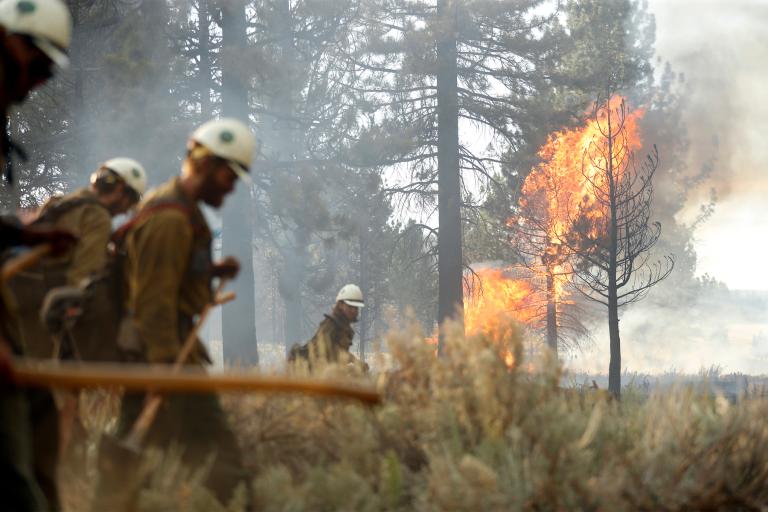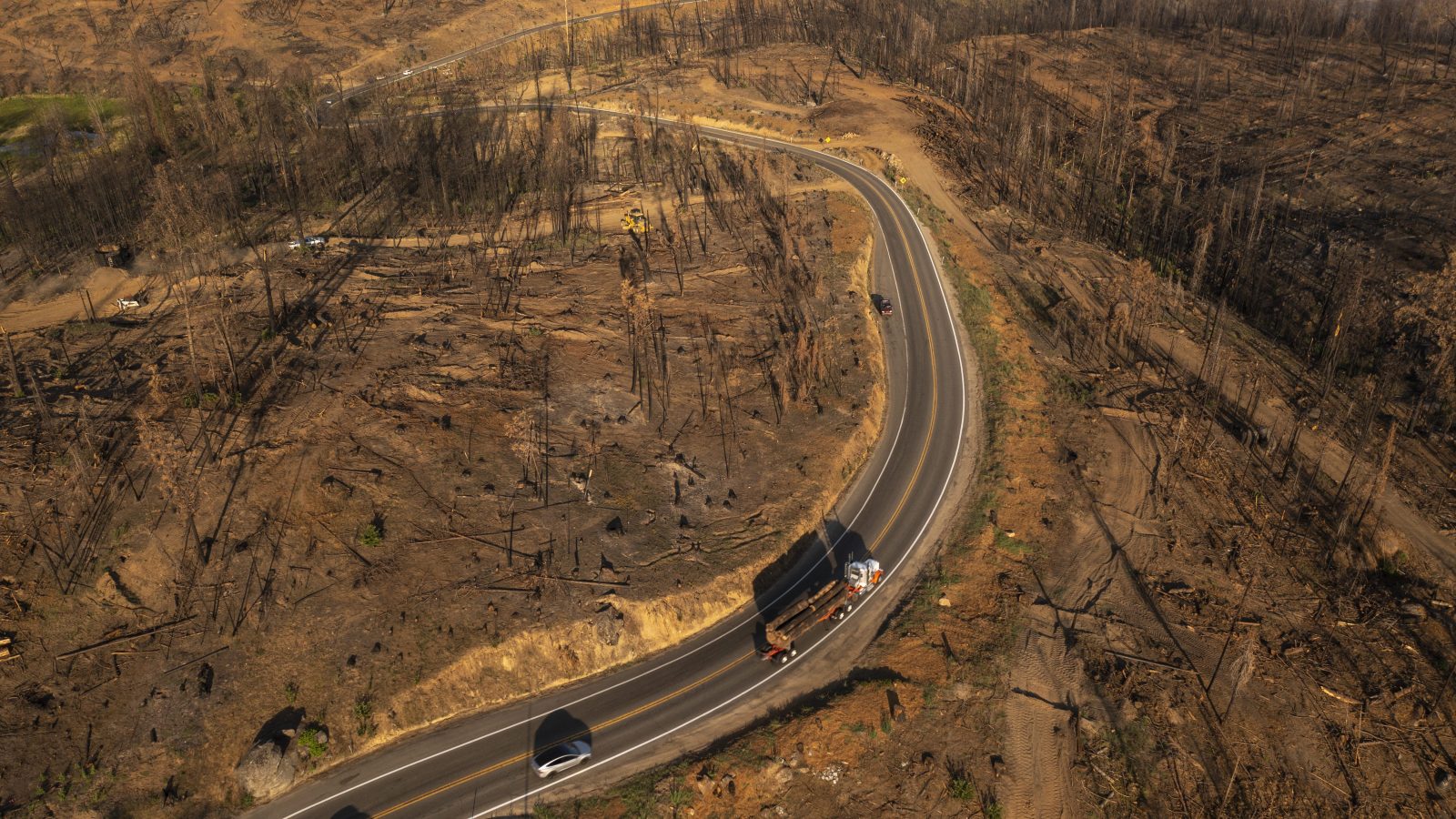Climate scientists have long warned that global warming would lead to extreme heat in many parts of the world. But the 120 degree Fahrenheit temperatures brought on by the heatwave in the Pacific Northwest in June were more in line with what researchers had imagined would occur later this century. “Astonished” is the word Michael Wehner, an extreme weather researcher at Lawrence Berkeley National Laboratory, used to describe his reaction to the heat in an interview with National Geographic. He was one of two dozen extreme weather and climate researchers who conducted an analysis in the days following the heatwave that found it would not have occurred in the absence of anthropogenic climate change.
“We said it is virtually impossible without climate change,” Wehner said of the event. “But I would have said beforehand it is virtually impossible with climate change.”
As more seemingly impossible events followed — intense flooding in Germany and Belgium killed more than 200 and counting, a massive wildfire in Oregon grew by 1,000 acres per hour, and a year’s worth of rain fell on central China in just three days — news outlets began reporting on researchers’ unease. “This catastrophic summer even has climate scientists worried,” a headline in the National Observer read. “Climate scientists shocked by scale of floods in Germany,” the Guardian wrote. CNN: “Scientists are worried by how fast the climate crisis has amplified extreme weather.”
What are we to make of this? Has climate change entered warp speed?
Not exactly, says Daniel Swain, a climate scientist at the University of California, Los Angeles who is an authority on extreme weather, wildfires, and other climate impacts.
“I’m less convinced that recent events tell us that things are moving faster than projections have suggested,” Swain said. “But I am increasingly convinced that we’ve underestimated the impacts of some of the changes that were actually fairly well predicted.”
Grist caught up with Swain to talk about extreme weather, climate models, and how even subtle increases in temperature can bring about immense change.
This interview has been condensed and lightly edited for clarity.
Q. Have you felt like this summer’s extreme weather events — the drought in the western U.S., the heatwave in the Pacific Northwest, the flooding in Germany and China — are evidence of climate change happening really fast, or have they been in line with what you had been expecting around this time?
A. There’s a lot of headlines right now reading, “Models failed. Science didn’t predict these extremes.” That just doesn’t ring true to me, because there have long been predictions that we’d see much more frequent and more intense extreme heat waves, more frequent and more intense extreme downpours. And that’s exactly what’s happening. The magnitude of these specific events have been particularly extreme. But is that necessarily because the models failed in a way that they shouldn’t have failed? I’m not totally convinced that’s the case.
I think what’s interesting is actually the diversity of responses in the scientific community. There are some folks who say that they were pretty surprised by what’s happened recently. But there are also some folks who say, “Yeah, it’s certainly shocking, but not really scientifically surprising.” And I would generally fall into that latter group, actually, because I think where the divergence may be coming from is that I think historically there’s been a little bit of a lack of imagination regarding what different levels of warming actually mean.
By this I mean, the planet has warmed 1 to 1.3 degrees centigrade so far. It doesn’t sound like a lot, but if you talk to planetary scientists and particularly people who study extreme events, that’s an enormous shift in the mean state of things already. But the problem is not the mean state shift unto itself. No one really feels 1.3 degrees of warming. The individuals in specific places on earth experience the changes that are happening in day-to-day weather where they actually live, which can be really different if you’re in the Arctic or the tropics or an island nation or the middle of a big continent somewhere.
So I think it’s important to differentiate between “the climate system is careening out of control faster than we thought that it would” versus “actually, even this amount of warming is a lot more problematic than we thought it was.” And I tend to think that it’s more the latter than the former.
Q. So this is what climate models said would happen?
A. There are some aspects of this where I do think that climate models have not fully captured everything that’s going on. There is evidence that, while climate models have done a very good job overall, when it comes to regionally specific changes or certain kinds of extreme events, that they don’t necessarily have a great handle on these events.
But where I differ with some other folks is that the models aren’t really designed to capture those things very well necessarily. Global climate models are designed and intended to simulate global climate. And in doing that, they do a really good job. They aren’t really tools that were expected to be really good at simulating regional-scale climate extremes. We know that they fail sometimes when they’re asked to do that somewhat out-of-scope task.
So when we get these really extreme events, like the unbelievable heat wave in the Pacific Northwest and these really extreme over-the-top flood events in Western Europe recently — these sorts of things that are beyond extreme relative to what we’ve seen historically — it probably shouldn’t be tremendously surprising that climate models don’t do a good job capturing them. Because the underlying physical processes are evolving on temporal and spatial scales that are finer than these models are intended to represent.
Q. If climate models aren’t intended to predict things like the Pacific Northwest heatwave, then is there a way to capture these localized events ahead of time?
A. What’s interesting to me is that the weather models we use day to day to predict the weather did a great job with these events. If anything, they did a better job than the humans who were monitoring them.
In the Pacific Northwest event, for example, the weather models were saying, yeah, this is going to be something that’s completely unprecedented historically and looks kind of absurd at face value. I was skeptical of what the models were telling us a week in advance about the temperatures in Seattle, Portland, and British Columbia. And then they actually happened. The models were right. But those are the weather models, not the climate models. And what’s interesting is, they aren’t fundamentally different. They’re just tasked with doing different things.
Weather models are designed to predict the weather on day-to-day timescales over smaller regions. The weather models did a good job predicting the extreme flood event in Western Europe, too. It wasn’t that the meteorologists didn’t know it was coming. You can have conversations about why that knowledge didn’t translate to the right kind of evacuation or preparation. But it was not a mystery. It wasn’t like it came out of the blue. So what’s interesting is that the weather models do capture these events in advance.
Q. Do you hope the heatwave and other extreme weather events will alert the public to the variability of a couple of degrees C of warming?
A. I hope so. I think this just keeps coming back to this notion that a degree or two of global warming doesn’t sound like a lot, but it is a tremendous shift in the system. But that’s not intuitively obvious to really anyone except for folks who really understand the dynamics of these nonlinear Earth systems interactions. I think we’ve had, from a broader societal standpoint, kind of a failure of imagination in the sense that there hasn’t been enough conversation about what it really means to warm a degree or two degrees or five degrees, god forbid. I don’t think people really understand — and I think this is even true of some scientists, even some climate scientists, honestly. People who are climate scientists might study the carbon cycle or might study large-scale dynamics or paleoclimate. I think a lot specifically about the extreme climate, these transient huge bursts of severe weather that can occur. And we’re adding a lot of extra energy to the system.




